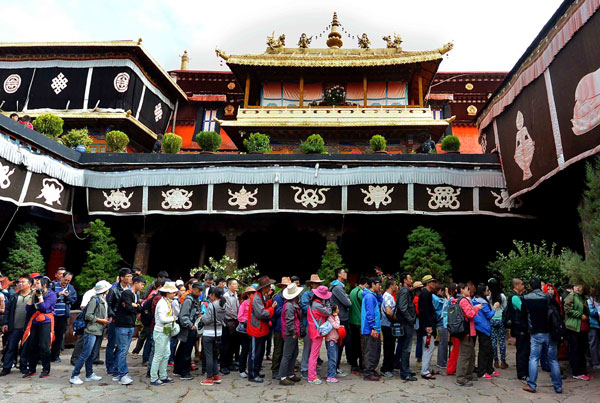 |
|
Tourists wait to enter Jokhang Temple in downtown Lhasa. The high season for visitors started in late June, and the city receives an average of 4,000 tourists every day. Wang Song / Xinhua
|
Infrastructure update
Nyima Tsering, 79, was born and raised on Barkhor Street and remembers clearly how the place looked when he was a child.
He said the wind blew dust into the stalls along the narrow earth road during the hot summer. At the time, Nyima Tsering's house was the property of Tashilhunpo Monastery and beggars gathered around it.
Previous renovations freed his six-member family from drinking water from a well, using a non-flush toilet and having to light candles for illumination, yet he said their lives had remained "not so convenient" until recently.
The courtyard in which he lives is home to several families, about 26 people in all, including seniors aged 80 and older. They all shared one water tap on the ground floor before the latest renovation was completed at the end of June.
Before that, water couldn't even be pumped up to the second floor.
Because the pipes were just 20 cms in diameter, the drainage system failed to discharge sewage from many households. Foul water gushed out onto the street on rainy days, Nyima Tsering said.
In all, 199 courtyards are scattered along 35 alleys in the Barkhor Street area.
Tashi Dorje, a deputy in Lhasa's city congress, said that in the old house-intensive district, sewage and the fires used for cooking and heating threatened the safety of the crowded courtyards.
The renovation project has helped change the situation, the project leaders said.
Now all the overhanging cables have been buried underground in 31 km of piping tubes and tunnels.
We recommend:
